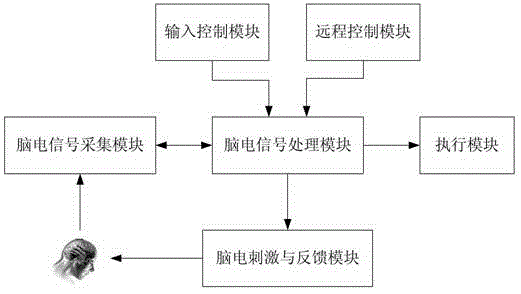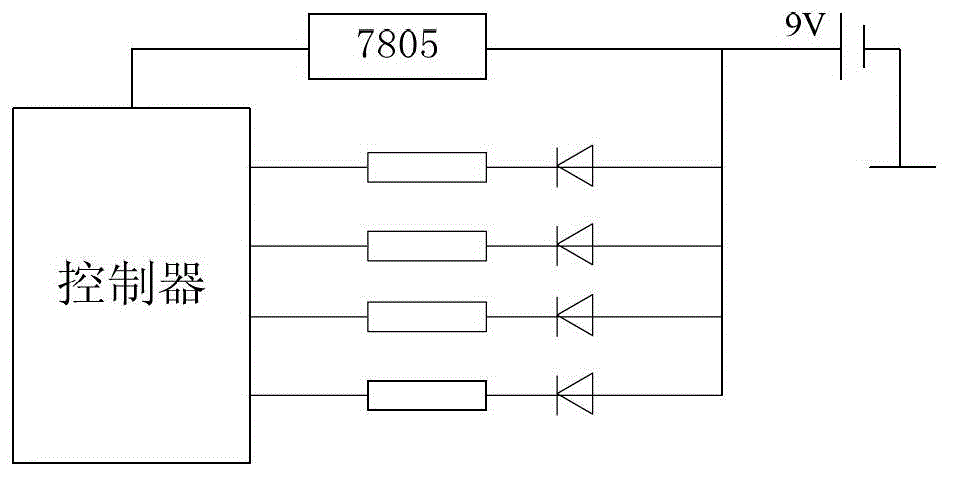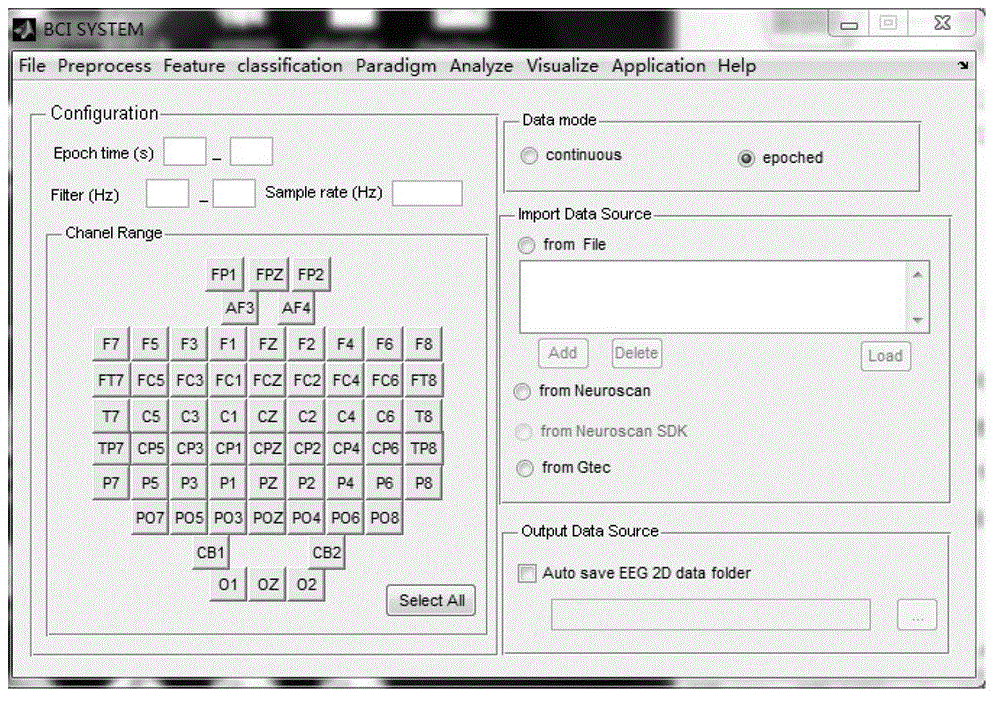System and method for controlling brain computer interface (BCI) based on multimode fusion
A brain-computer interface and control system technology, applied in mechanical mode conversion, computer components, user/computer interaction input/output, etc., can solve problems such as difficulty in restarting, unsatisfactory information transmission rate, and inability to effectively control , to improve the information transmission rate and reliability, reduce the information transmission rate, and improve the effect of adapting to the crowd
- Summary
- Abstract
- Description
- Claims
- Application Information
AI Technical Summary
Problems solved by technology
Method used
Image
Examples
Embodiment 1
[0057] This embodiment provides a brain-computer interface control system based on multi-modal fusion, such as figure 1 As shown, it includes: an EEG stimulation and feedback module, an EEG signal acquisition module, an EEG signal processing module, an execution module, an input control module, and a remote control module; the EEG signal processing module is respectively connected with the EEG signal acquisition module and the EEG signal processing module. The EEG stimulation is connected to the feedback module, the execution module is connected to the EEG signal processing module, the input control module is connected to the EEG signal processing module, and the remote control module is wirelessly connected to the EEG signal processing module.
[0058] Wherein, the EEG stimulation and feedback module is used for inducing SSVEP steady-state vision and inducing MI motor imagery; the EEG signal acquisition module is used for collecting EEG EEG signals; the EEG signal processing m...
Embodiment 2
[0074] This embodiment provides a brain-computer interface control method based on multi-modal fusion, such as Figure 4 As shown, the training step S0 and the control steps S1 to S4 are included, and the training step S0 is performed before the step S1;
[0075]The training step S0 includes:
[0076] S01, the auditory feedback unit in the EEG stimulation and feedback module sends out sound stimulation to induce the subject to perform MI motor imagery; at the same time, the SSVEP stimulation unit in the EEG stimulation and feedback module sends out visual stimulation to induce the subject's SSVEP steady-state vision ;
[0077] S02, the EEG signal acquisition module collects the EEG signal of the human brain;
[0078] S03, the EEG signal processing module extracts and identifies and classifies the SSVEP steady-state visual evoked potential feature and the MI motor imagery EEG feature in the EEG EEG signal;
[0079] S04, the EEG stimulation and feedback module judges whether ...
Embodiment 3
[0090] In this embodiment, the brain-computer interface control system and method based on multi-mode fusion is applied to a wheelchair (that is, the execution module is a wheelchair), and an artificial intelligence wheelchair is realized. The development environment of the artificial intelligence wheelchair can use a PC The software environment of matlab2009 and above under the Windows operating system of the computer requires the support of serial communication hardware equipment. The artificial intelligence wheelchair is mainly composed of user training and real-time wheelchair control. Users need to undergo virtual reality interactive training for visual and auditory collaborative perception. After the classification accuracy of the EEG model is guaranteed and the relevant parameter settings are confirmed, the actual control operation of the wheelchair can be performed.
[0091] 【User training test】
[0092] 1. MI motor imagery training: The classification and recognition...
PUM
 Login to View More
Login to View More Abstract
Description
Claims
Application Information
 Login to View More
Login to View More - Generate Ideas
- Intellectual Property
- Life Sciences
- Materials
- Tech Scout
- Unparalleled Data Quality
- Higher Quality Content
- 60% Fewer Hallucinations
Browse by: Latest US Patents, China's latest patents, Technical Efficacy Thesaurus, Application Domain, Technology Topic, Popular Technical Reports.
© 2025 PatSnap. All rights reserved.Legal|Privacy policy|Modern Slavery Act Transparency Statement|Sitemap|About US| Contact US: help@patsnap.com



